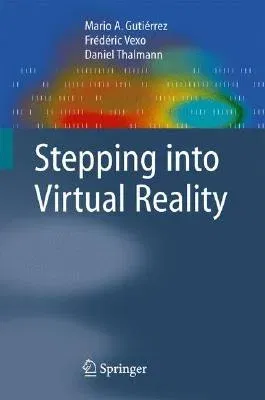Mario Gutierrez
(Author)Stepping Into Virtual Reality (2008)Paperback - 2008, 7 May 2008

Qty
1
Turbo
Ships in 2 - 3 days
In Stock
Free Delivery
Cash on Delivery
15 Days
Free Returns
Secure Checkout

Print Length
214 pages
Language
English
Publisher
Springer
Date Published
7 May 2008
ISBN-10
1848001169
ISBN-13
9781848001169
Description
Product Details
Book Edition:
2008
Book Format:
Paperback
Country of Origin:
US
Date Published:
7 May 2008
Dimensions:
23.34 x
15.8 x
0.91 cm
ISBN-10:
1848001169
ISBN-13:
9781848001169
Language:
English
Location:
London
Pages:
214
Publisher:
Weight:
399.16 gm